Dambuster Bouncing Bomb Tests at Reculver and Manston
In May 1943, a top secret weapon was used against dams in the German Ruhr valley in an attempt to cause catastrophic damage to the enemy war machine. It was hoped that the attack might shorten the war and save countless lives. The now famous mission by 617 Squadron “The Dambusters”, led by Squadron Leader Guy Gibson was masterminded by master inventor Barnes Wallis, but was clouded in secrecy even from the very crews that would risk their lives until the very last possible minute, such was the need for surprise.
During April and May of 1943 testing would be carried out at Reculver of both the weapon code-named ‘Upkeep’ (Vickers Type 464) that the Dambusters would use and a smaller ‘Highball’ version, whilst development went on at nearby Manston. Reculver was favoured for the development of the weapon as the dropped bombs could be easily recovered and it was there that the ‘Upkeep’ would change from spherical to the shape used in the attack.
Nearer to the mission date, the weapon would be exploded off the coast at Broadstairs.
The Targets
As early as 1937, the Air Ministry had drawn up a list of potential targets to attack in the event of an outbreak of war with Germany. One part of their planning was to bomb the Ruhr area to destroy the means of generating electricity. There was a suggestion about destroying a number of the large dams in the area to achieve this, but because of the difficulties of such a task, it was sidelined. It was suggested that a minimum of fifteen 500lb armour piercing bombs would need to fall within an area of 150 feet at the base of a dam on the water filled side for any effect to be made on the dam.
In 1938, the Air Ministry looked again at the possible ways that the dams could be attacked and a number of options were proposed. These had to counter the protective measures put in place at the dams, including protective netting to protect against torpedo attacks. The initial thoughts were to destroy these protective devices before launching torpedoes to destroy the dam wall.
By mid 1938, the Möhne Dam had been pinpointed as a target that could cripple the production ability in the Ruhr if required. A number of further ideas about dam destruction were proposed, but none taken forward.

In early 1940, nine months into the war, the prospect of bombing the dams was revisited. Wing Commander Finch-Noyes of the Government Research Department at Shrewsbury was tasked with re-examining the previous files about the destruction of the dams. In September, he concluded that detonating 20,000lbs of explosive, forty feet below the top of the dam, against the wall on the water side, would be an effective method of destruction. He considered that a number of small bombs to make up this charge, detonated within a short period of time would suffice. His thoughts were to look at torpedoes with depth charges. In conjunction with his old friend, Noel Pemberton-Billing, their ideas evolved into an 18 foot (5.48 metres) long torpedo, 30 inches (76cm) in diameter and propelled by a rocket motor, dropped by as many as sixteen aircraft. Their idea wasn’t pursued by the Air Ministry.
Barnes Wallis
Around the same time in 1940, Barnes Wallis was an employee at Vickers Armstrong Aviation at Weybridge. He was a civilian aeronautical engineer, responsible for the geodetic construction design of the Wellington bomber as well as on the Vickers Wellesley and Warwick. This was an idea transferred from his work on the Vickers R100 airship in 1930, the sister ship of the ill-fated R101. Independently, he was researching how to destroy enemy energy production, including construction of dams, power stations and coal mines as well as bomb construction and their effects.

Barnes Wallis’ first suggestion was a 20,000lb bomb dropped from a great height to cause an earthquake effect against targets of bridges, viaducts and dams. During this time he became aware of the need to destroy the Möhne and Eder dams and arranged to carry out tests on scale models. Those tests concluded 16,000lbs of explosives placed within 50ft of the dam face would destroy it.
Although Wallis was convinced of his ‘Earthquake’ bombs, the RAF didn’t have an aircraft capable of delivering the load, even though he had proposed a six-engined, high altitude bomber, the ‘Victory Bomber’, which had been previously rejected. In 1941, Wallis presented the combination as a way to destroy the dams. In May, the Air Ministry wrote to Wallis to inform him that it would take too long to develop then construct the aircraft. In September 1941, Vickers Armstrong abandoned the plans for the bomber.
Undeterred, Barnes Wallis continued to champion his ‘Earthquake’ bomb to be developed and tests continued. The Air Ministry without a suitable method of attack put the attacks on the dams on hold once more.

In 1942, Barnes Wallis came up with the idea of bouncing a round bomb across the water to its target, famously using marbles across a water tub in his back garden. It wasn’t initially officially approved, but there was sufficient interest to give Wallis the encouragement to carry out experiments on the principle. By September 1942, the design had become a spherical bomb, released from a low flying aircraft whilst the bomb was spun backwards to both add stability and to cling to the wall of the dam. Tests scaled up to a 54″ sphere launched from a Wellington bomber and in late September/October 1942, the first experiments were made off Chesil Beach in Dorset. They continued through December 1942 to March 1943.

The Go Ahead. Just.
Barnes Wallis would have many setbacks in his attempt to get the project accepted. “Bomber” Harris was partly impressed but also wasn’t happy to divert a Lancaster squadron to the mission. However, Air Chief Marshal Charles Portal, after much political wrangling, letter correspondence and even Wallis’ resignation from Vickers, became fully briefed and was impressed with the footage from Chesil Beach. Portal ordered an astonished Air Marshal Linnell to approve the mission. At 3pm on February 26th 1943, Barnes Wallis was told by Linnell, who had previously blocked the plan at every stage, that “The Air Staff have ordered me that you are to be given everything you want”. A few days later Linnell announced his intention of resigning. The date for the mission was set for May, when the water levels would be at their highest to cause the most damage and would put the most pressure on any damage caused to the dams.
During the experiments, it was decided that two types of the weapon would be developed. One, originally with 7,500lbs of explosives, later 6,500lbs or Torpex explosive was code named “Upkeep”. This was to be used against the dams and carried by Lancaster bombers (the type 464 provisioning), specifically modified for the task. A second, holding 600lbs of explosive was code named “Highball” and would be used against shipping carried by modified de Havilland Mosquitos.
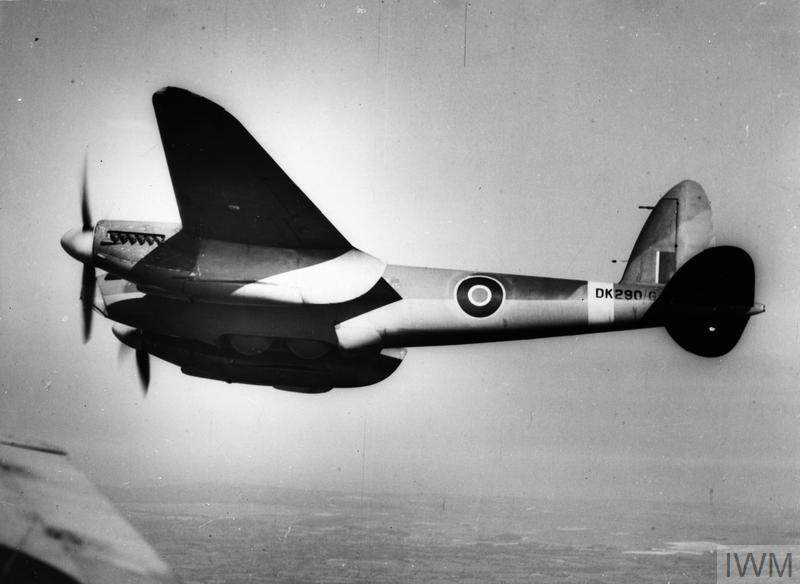
In a memorandum on 19th March 1943, it was made clear that the use of Upkeep against the Mohne Dam would lose the element of surprise necessary for the Highball, such that it was stressed that development of both weapons would need to be synchronised. It was expected that the enemy would immediately take counter measures to protect heavy naval units and dams once the first device was used. It was also suggested that enough weapons should be made available to simultaneously attack dams in Germany, Sardinia and Northern Italy and whatever enemy capital ships were available targets.
The memorandum urged that all efforts should be made so that by 26th May, effective attacks could be made by Highball on the Tirpitz or other capital ships in Norwegian waters and Upkeep on the Mohne and possibly the Eder dam.
Tests at Reculver using Manston
In March 1943 it was decided to build 150 “Upkeep” and modify 30 Lancaster bombers. At the same time, it was decided to move the trial bomb tests to Reculver on the Kent coast, from Chesil Beach. Reculver offered better security and easy recovery of the weapons for examination as well as the benefit of RAF Manston a short distance away.

On 9th April 1943, a meeting at Manston ran through the current situation both there and at Turnberry, which was the base for trials on Loch Striven in Scotland. The following details are extracts from Lt Cdr Leo Lane’s wartime diaries, as supplied by John Anderson. Lt Cdr Lane took part in the early Upkeep trials at Chesil Beach and later the Upkeep/Highball trials at Reculver and Loch Striven:
Upkeep:
18 Unbalanced Stores.
4 from Vickers balanced.
Balancing gear to follow 4-5 days after 9/4/43.Aircraft:
1 Wellington at Manston. 1 Mosquito at Manston. 1 Lancaster on 10th. 1 Lancaster due later. 1 Lancaster to DDRDA, a) Trials Boscombe, b) Petrol cons Test at Manston. 1 Prod Mosquito to Manston. Rest Prod Mos. to Skitten. Flt Cdr Rose for Mosquito Squadron.Highball Mosquito Trials Manston:
After certain number of drops & sufficient data a/c will go to Turnberry.
Speed – maximum speed.
Height – 100 feet & 200 feet.
Spins – 800 at present maximum. Say 700 & 1000 if poss (peripheral speeds lower as smaller diameter).
Initial trials by Vickers. Repeated Squadron Pilot. Trials at Turnberry by Squadron.
By 10th April 1943, 20 test Upkeeps and Highballs had reached Manston. Four days earlier, the first Type 464 (provisioning) Lancaster had flown at the Royal Aircraft Establishment at Farnborough. On the 10th, Barnes Wallis took off in a Type 464 (provisioning), presumably ED765, from Farnborough at 4pm for the trip to Manston.

On Sunday 11th April 1943, there was a briefing for all those involved at 1000hrs in Hut 28 at Manston. The whole operation was to be covered with the highest security. It had originally been decided to run the Highball trials first before the Upkeeps, but with everyone together, the two bombs plus the test Lancaster and Mosquito, it made sense to run the two more or less together.
Police had already cordoned off the quiet stretch of coast between Margate and Herne Bay where the tests would take place.
The Upkeep consisted of a steel cylindrical core, 60 inches long and 51 inches wide. in the flattened side of the mine was positioned the naval Mk XIV hydrostatic pistol that would be the detonator, fitted shortly before loading which would detonate at the right depth. The outer casing was made of wooden staves, held in place by strips of metal bindings, similar to the construction of a wooden beer barrel. Wallis believed the outer casing that gave the bomb its spherical shape was essential to the skipping distance required and would run truer than a cylinder.
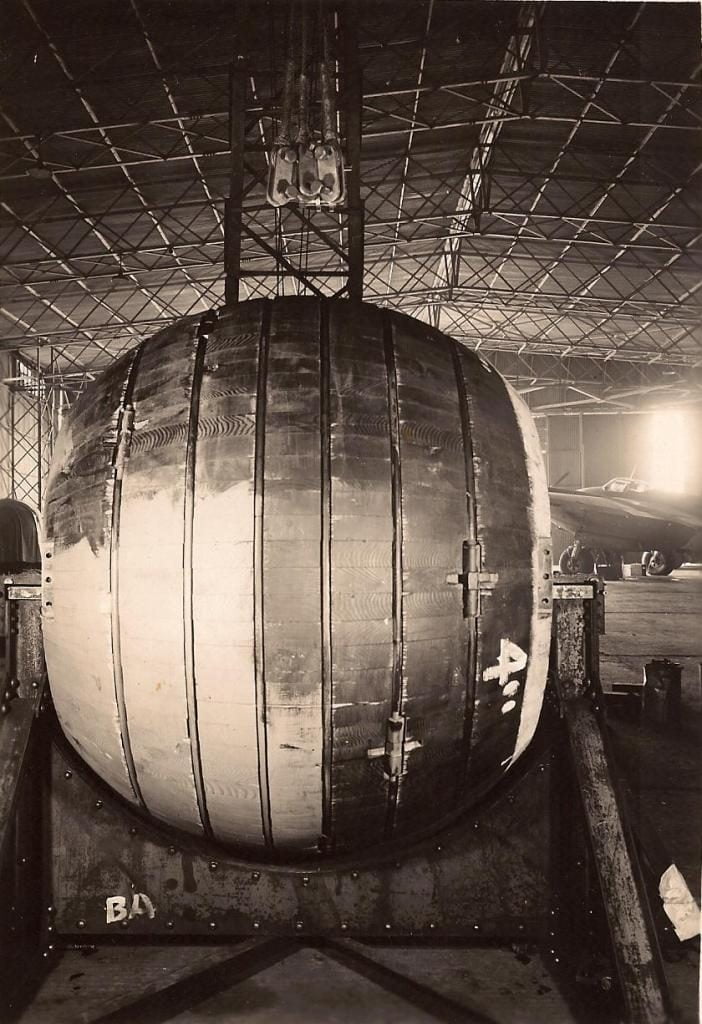
The Type 464 (provisioning) Lancasters were Lancaster BIIIs, fitted with Packard-built Merlin 28 engines. The modifications were designed by the Lancaster’s original designer, Avro’s Roy Chadwick who already had a long list of aircraft to his name, that would end with the Avro Vulcan. Their mid-upper turrets were removed to reduce drag, as were the bomb bay doors, with caliper arms fitted as well as the hydraulic motor required to provide the back spin. The motor was fitted to the hydraulic system normally used to operate the bomb bay doors.
In the afternoon on the 11th April, a huge Upkeep was hoisted into Lancaster ED765/G and spun whilst on the ground. The first test had worked.
On Monday 12th April 1943, Group Captain Harry Satterly ordered Wing Commander Guy Gibson and his Bomber Leader, Flight Lieutenant Bob Hay to head to Kent to witness the first secret trials of the weapon they would be carrying on what was now known as ‘Operation Chastise’. 617 Squadron had been formed on 21st March specifically for the mission and Gibson had been given free reign to recruit from Lancaster squadrons for crews. They drove the 200 mile journey and arrived at Manston early in the afternoon. However, everything wasn’t yet ready for the trials. Wallis and his team were still working on the Highball and Upkeep ‘stores’ all day and further spinning tests were being carried out in Lancaster ED765/G. With nothing to do on a warm sunny spring day, both Gibson and Hay took a car and drove around Margate. The hotels were all closed and Dreamland had become an army barracks. Barbed wire had been laid along the beach. Resorting to just about the only thing open, both sat in the sunshine eating fish and chips.
Some sources suggest that Gibson and Hay flew down in the Miles Magister which features later, and that the first trial was held on the 11th April which is as listed in Guy Gibson’s own logs, but the weight of other evidence suggests that the 13th is the correct day for the first trial at Reculver.
Barnes Wallis had also been struck by how deserted the coast was and had difficulty in finding a room, but found one near to the test site at Reculver, in a guest house called the Miramar in Beltinge, now the site of a nursing home.
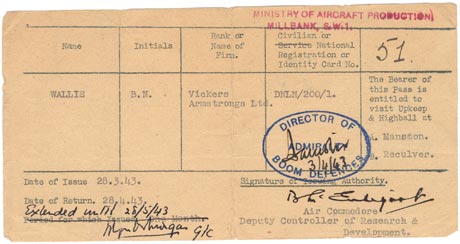
13th April 1943 was a cold and cloudy but calm day. By 0900, two Highballs had already been dropped by a No.618 Squadron Mosquito. Its first run was at 150ft, 340mph and the Highball spun at 500rpm. On the second, 100ft, 360mph and 1000rpm. On both drops, the Highball broke up.
Gibson and Hay arrived at the ruin of St. Mary’s Church at Reculver to accompany Barnes Wallis, Lockspeiser and Air Vice-Marshall Linnell amongst others. High speed cameras had been setup to record the events whilst policemen patrolled the barbed-wire perimeter in the distance.

CAB 80/68/99, which is pages 379-380 of CAB 80/68)
Out to sea, two white aiming marker buoys had been placed. At 0920, the peace was broken by aircraft engines from the East. The first up was a converted twin engined Wellington Mk III BJ895 on a path from East to West, parallel to the beach, flown by a Vickers test pilot, Bob Handasyde. It dived to gain speed and levelled out at around 80 feet, then travelling at 289mph, it dropped its bomb. Turning at 520rpm, the weapon hit the water, shattering the wooden outer casing. The metal cylindrical core that would hold the explosive on the live versions continued to spin and bounce. ‘Excellent’ said Wallis. The weapon that the Wellington had carried were mid-sized between the small Highball (35″ diameter) and the Upkeep (50″ diameter, 60″ long). The Wellington would drop another on that day from 90 feet.
After the Wellington had disappeared, the fragments of the mine were recovered and the observers awaited the next trial.
At 1108, the Type 464 (provisioning) Lancaster came into view. Reports differ if this was piloted by Squadron Leader Maurice ‘Shorty’ Longbottom, an RAF Officer seconded to Vickers for test flying, or Captain H. A. ‘Sam’ Brown, Avro’s chief test pilot. Also some reports suggest the Type 464 (provisioning) Lancaster was shadowed by a second – perhaps the reason for the discrepancy. The black and white Upkeep was spinning below the Lancaster. The Lancaster levelled out, approaching at around 250 feet and travelling at 210mph. Wallis crouched on the ground, watching intently but knew that the aircraft was well above his instruction of 150 foot high. The mine was released, launching a huge spray of water as it struck the sea and the mine shattered and disappeared. Gibson for one, kept quiet, knowing that he couldn’t say anything to help the situation. Wallis, however knew that they weren’t likely to get everything right at the first attempt. There were enough practice ‘stores’, staff, manpower and equipment to sustain a number of days’ worth of trials of both the Upkeep and Highballs.
The observation party travelled back to Manston, where an Upkeep was strengthened further for another drop later that evening.
Whilst these modifications were being carried out Gibson and Hay managed to borrow a Miles Magister T9908, an open-cockpit two-seater monoplane trainer from No.137 Squadron. Again accounts differ as some suggest that this was the aircraft that they flew down in, and they were returning to Scampton but records do suggest that it belonged to No.137 Squadron. It would seem possible that Gibson and Hay decided to carry out an airborne recce of the Reculver area, perhaps itching to have a go at the tests themselves. Gibson recounts:
When we were at 300 feet over Margate the engine stopped. Anywhere else it would be easy to put the the machine down in a convenient field but at Hell’s Corner they make quite certain that aircraft do not land safely in fields. There were abundant wires and other devices because German glider-borne troops were not very welcome. So we fell into the trap. . . . After the aircraft had rolled itself into a ball and we had stepped out of the dust a policeman arrived and took a statement. “I’m glad to see our anti-invasion devices work” he said without sympathy.
Despite the aircraft being wrecked, the two men climbed out largely unhurt before they were accosted by a local man who had rushed to check they were alright. “I think they teach you young fellows to fly too early”, he said. The local policeman then took their statements.
Gibson and Hay were collected and taken back to Manston. The aircraft would be recovered a few days later by an RAF rescue unit from Manston. Reports differ if Gibson and Hay returned to Scampton by car, train or by air.

Just after 1900 on the 13th April, with observers and cameras once more gathered on the shore. The Lancaster made another run. Wallis was convinced that height was the issue. This time, he asked the pilot to drop the Upkeep at just 50 feet. Speed this time was 230mph, but again, the bomb caused a plume of spray in the air and pieces of the shattered wooden casing were thrown into the air. However, free of the casing, the cylindrical central core, bounced across the sea, just as Wallis had intended. He was encouraged rather than downhearted, but he still felt he could get the spherical casing to work as he thought it had more chance to bounce effectively and in a straight line. One piece of debris flew up and damaged the Lancaster, causing some difficulty in landing back at Manston after shattering one of the elevators.
At Bomber Command Headquarters in High Wycombe, the results of the first trials were treated with withering contempt rather than despair. Sir Arthur “Bomber” Harris’ first reaction to the project was “This is tripe of the wildest description. … there is not the smallest chance of it working. To begin with the bomb would have to be perfectly balanced around it’s [sic] axis otherwise vibration at 500RPM would wreck the aircraft or tear the bomb loose. I don’t believe a word of it’s [sic] supposed ballistics on the surface. … At all costs stop them putting aside Lancs & reducing our bombing effort on this wild goose chase. … The war will be over before it works – & it never will.“.

Now that the first real test results had come in, Harris remarked “As I always thought, the weapon is barmy…“.
He however was overruled by the top RAF officer, Sir Charles Portal who was impressed by the films of the bomb tests and tried to assure Harris: “I will not allow more than three of your precious Lancasters to be diverted for this purpose until the full scale experiments have shown that the bomb will do what is claimed for it.” [Harris papers, H82, RAF Museum.]
At Manston, the Upkeeps were strengthened, with more and tighter metal hoops placed around the wooden casing. Work was carried out in a hanger with the strictest security.
On 15th April there is a report of Gibson departing Manston with two crew in an Airspeed Oxford to Reading and Fairoaks. This may be Gibson returning after his crash, but again there are conflicting reports.
The next set of tests were scheduled for Saturday 17th April. Wallis drove down to Manston, then on to Reculver for 1230. The day was calm but overcast with low, misty cloud. At 1245, it was agreed to postpone the trial because of the poor visibility. Wallis and Norbert Rowe (Director of Technical Development at the Ministry of Aircraft Production) stripped off and went for a swim in the icy waters, drying themselves later with handkerchiefs. There are some reports that this “swim” was actually the party trying to find parts of the earlier Upkeeps as would likely have taken place a few times. Once again, Wallis and the scientists dined and stayed that night at the Miramar. Wallis discussed the trials with mathematician, Professor Taylor until 2300.
Sunday 18th April saw the weather improved to allow testing. At 1100, Joseph ‘Mutt’ Summers, test pilot for Vickers Aviation, flew the Lancaster over the range. On 5th March 1936 he had flown the first prototype of the Supermarine Spitfire, K5054. The first Upkeep had been varnished. It bounced once, then sunk without trace.
On the second run, the untreated Upkeep once more disintegrated on hitting the water.
A third run was made at 1330, again with a varnished Upkeep. Again the casing disintegrated, but as it did 5 days earlier, the cylindrical core sped forwards, bouncing on some 700 yards, more than a third of a mile. That distance would likely be good enough for an attempt on a German dam.
Over lunch, Wallis and Taylor discussed the results of that day. Wallis took the decision to abandon the wooden casing, probably begrudgingly as he was so convinced of the original design.
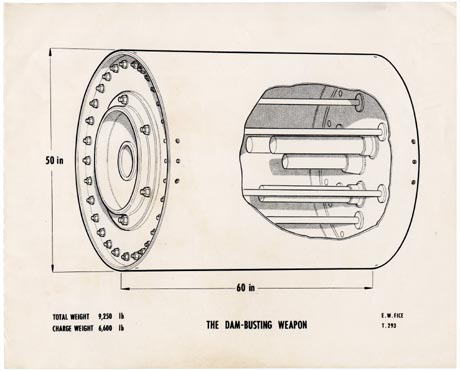
At RAF Scampton, 617 Squadron’s base, the crews continued their training in daytime low-level flying and navigation. However they would need to master this at night. Four Lancasters were fitted out with an American night simulation kit – amber-tinted goggles combined with blue celluloid over the Lancaster’s Perspex windows. Gibson himself tested this equipment out on the 21st April. They had also arrived at a solution to judge their height – a pair of spotlights that would converge on the water at the height required and a device to judge release distance on the Möhne dam.
All of the main preparatory work and distance judging was largely for the main target of the Möhne dam – the other dams would require significantly different approaches, drops and skills by the crews.
Also on the 21st April was another test of the cylindrical form of the Upkeep, this time missed by Wallis who was working on the Highball and attending meetings.

On the 22nd April, Wallis was present to see Vickers’ test pilot Richard Handasyde drop another cylinder from 185 feet at 260mph. It shattered and sank. Wallis recorded “Failure”. There were now just three weeks before the planned mission.
By the 24th April, Wallis had begun to wonder if he should return to the spherical shape. The real issue however was the speed and height. Wallis asked Gibson “Can you fly at 60 feet above water?” “If you can’t, the whole thing will have to be called off.” Gibson knew how much of a risk it would be to operate a 30 ton aircraft with a wingspan of more than 100 feet, at night and at 232mph. He could hardly say no, though. The spotlight system was altered to fix at 60 feet and testing began in Northamptonshire. After managing to fly at that height, Gibson was able to ring Wallis up and confirm – now a further set of trials could be undertaken at Reculver.
27th April – According to his logbook, Guy Gibson and his crew, plus Sqn Ldr ‘Dinghy’ Young fly in to Manston in Lancaster ‘H’. It became a round trip back to Scampton, but reasons are as yet unknown.
28th April – Wallis drives down to Kent, picking up Admiral Renouf for two days of trials.
29th April – With both Wallis and Gibson in attendance, at 0915, “Shorty” Longbottom carried out a run at 60 feet. The Upkeep bounced six times, covering a distance of 670 yards, but did veer about 30 feet to the left towards the end. That had always been Wallis’ concern with a cylindrical shape. There were two weeks to go before the mission and the Upkeep had to run straight to have the best chance of breaching the dams.
30th April – Upkeep trialled again, but again veered to the side.
“Stripped Upkeep” – this video shows two runs by a Lancaster with Upkeeps at what appears to be Reculver, followed by film of testing of a smaller store from Wellingtons at Chesil Beach. Dates of these tests are unfortunately unknown.
If the film isn’t currently available, you may be able to view here: https://film.iwmcollections.org.uk/record/4532
On 1st May, May Day, the weather was bad and the sea was rough. The Upkeep barely ran at all. Gibson and his crew had flown to Manston, in Lancaster ‘H’, presumably to witness the trials, although given the secrecy, his crew may not have been present at Reculver.
On 2nd May, as they watched the last of the Highball trials, there was agreement that there would be one further set of five trials in a few days’ time. On the same day when Pilot Officer Watson, one of 617 Squadron’s Armaments Officers (P/O Henry Watson MBE) returned to Scampton after spending three weeks at Manston, working on and watching the development of Upkeep. He told Gibson that within three days of his arrival at Manston, he had been shown a file including diagrams of the objectives, a map of the Ruhr and other top secret details, in the presence of Squadron Leader Rose from 618 Squadron. Gibson was furious – only two people at Scampton knew the targets, himself and the station commander. Even the crews had been spun white lies. Complaints were made and the two involved were sworn to secrecy.
Gibson sat down to send a handwritten note to 5 Group Headquarters, clearly not even wanting to divulge secrets to a typist.
(1) Within three days of arriving at Manston, P/O Watson was shown a file which I think you have seen. This contained:
a. Sectional drawings of certain objectives
b. A map of the Ruhr showing these objectives
c. Various secret details in connection with Upkeep.
(2) That P/O Watson, an armament officer in this squadron, thus knows more about this operation than either of my Flight Commanders and at the time, more than I did myself.
I have had a long talk with this officer and am satisfied that he understands the vital need for security, and the disregard of security will lead to most distressing results. But I consider that there is no need for a squadron armaments officer to be given such information.P/O Watson, tells me moreover, that he read this file in company with a F/O Rose, who belongs to 618 Squadron, Coastal Command. This officer is engaged in the same type of work as ourselves, but has no connection with any matter concerning Upkeep.
P/O Watson informs me that he was shown this file by W/C Garner of M.A.E.E. In fairness to W/C Garner I should like to point out that he has been doing excellent work whilst he has been in charge of the trials at Manston. However, I do feel that the more people who know, the looser the security will be.
From AIR 14-595 – Number 617 Squadron: Operations against Dams
During the first week in May, two screens were erected east of the church at Reculver to simulate the dam towers. The Lancaster would then attack towards the shore. It would mean that several would land on the beach and at least one, the mined field behind.
4th May – Gibson again flew to Manston in Lancaster ‘B’.
On 6th May, Barnes Wallis travelled to Manston with “Mutt” Summers after lunch, to watch ‘Shorty’ Longbottom drop the second of two Upkeeps, but it bounced short. When back at Manston, it was clear that the caliper arms had become badly aligned, clearly a reason for the poor drop.
On 7th May, Flying Officer Charlie Williams (Wireless Operator) and Flight Lieutenant Norm Barlow (Pilot) flew down to Manston in one of the ordinary training Lancasters, rather than their own 464 that had now been received – ED-927 “AJ-E”. Gibson and his crew flew to Manston in Lancaster ‘V’.
The same day, Wallis oversaw the realignment of the caliper arms and hurried to Reculver to watch Longbottom carry out two further tests. The Upkeep was properly balanced and there was little or no deviation. Both ran well and were direct hits. With a week to go before the raid, Wallis’ weapon was finally beginning to work.
On 8th May, Guy Gibson arrives at Manston in a Vega aircraft with F/L Cox, arriving from Hendon and departing for Scampton.
On 11th May, it was finally time for some of the 617 Squadron pilots to try dropping inert Upkeeps at Reculver. Up first would be Gibson, Hopgood and Martin – numbers one, two and three in Gibson’s strike force. They all took off in the afternoon, flying in formation to Manston where they were loaded with an Upkeep for the first time. Wallis, after work and meetings had driven to Reculver and by 1800 was ready on the bluff by the Church to watch.
Gibson dropped his Upkeep at 60 feet which bounced over the water for 600 yards, hitting the shore between the two screens. With fewer training hours that the rest of the squadron, Gibson had delivered almost perfectly. Barlow also dropped successfully at 60 feet and 220 mph.
Wallis drove to Manston to meet the three crews for a short time as the crews were due back to Scampton.
On 12th May, more 617 crews headed to Kent with their own Type 464 (provisioning) Lancasters and groundcrews. Again landing at Manston before their runs, they included Flight Lieutenant David Shannon in ED-929 “AJ-L”. Although at the right height and speed, his bomb aimer, Flight Sergeant Len Sumpter misjudged and dropped to early by about forty yards. The Upkeep failed to reach the shore.
Flight Lieutenant Les Munro flew in about ten feet too low, as in daylight their spotlight height system wasn’t usable. As the Upkeep landed, the spray knocked a piece of fairing off the bomb bay. Their Lancaster would be repaired in time for their part in the Sorpe dam attack.
“I was probably a little too low, with the result that the fuselage was hit by the splash. It jammed the rear gunner in his turret, and he had to stay there until we reached base”
Les Munro
Flight Lieutenant Les Munro’s run

© IWM FLM 2360

© IWM FLM 2361

© IWM FLM 2362

Maudslay damaged his aircraft (ED933/AJ-X) in a similar way but more severely. After managing to limp it back to Scampton, it was declared as Category AC (badly damaged) and handed over to Flt Sgt Sansom and his R&M Flight for repair. Normally the level of damage would necessitate it being returned to Avro, but the nature of the job and lack of time available meant there was no time to return it. Maudsley would be allocated the last modified Lancaster (ED937) which arrived at Scampton, coded AJ-Z as a temporary replacement.
The “Photo Perfect” run

© IWM FLM 2338

© IWM FLM 2340

© IWM FLM 2339

© IWM FLM 2341.
Notice how the pilot is already climbing.

© IWM FLM 2342.
The Upkeep rises from the water after its first ‘bounce’.

On 13th May, Gibson called Shannon and Sumpter into his office to give them a talking to for dropping their Upkeep too early on the previous day. They knew Gibson was right – the next time they would drop an Upkeep, it would be at the German dams. On that night in ED-929 ‘AJ-B’ they would drop successfully on the Eder dam but fail to breach it themselves.
The same day, more crews flew to Reculver including Squadron Leader Henry Maudsley in ED-937 ‘AJ-Z’ which suffered damage even worse than Munro’s did. Ground-crews were ordered to work around the clock but the aircraft would not make the mission and they would fly in another.
In between the Squadron’s runs, the Vickers pilots continued their trials.
Four Spitfires from No.453 Squadron (RAAF) arrive at Manston to escort a Lancaster which would lay a ‘mine’ in the estuary.
‘Shorty’ Longbottom flew out to sea and dropped a live Upkeep filled with Torpex from between 60 and 75 feet (reports vary), flying in a South West to North East direction at 232mph, five miles off Broadstairs, escorted by two of the Spitfires. This was the first drop of a live Upkeep and was observed by Guy Gibson in a second Lancaster some 1,000 yards away along with Sqn Ldr Handasyde as pilot and the Secretary of State for Air and other senior staff officers, accompanied by the second pair of Spitfires. A theodolite camera crew were situated at North Foreland.

The Upkeep bounced seven times for about 800 yards without deviation, then sank. A moment later the explosion from about 33 feet down, sent a plume of water nearly 800 feet into the air. It was a complete success.
On the 14th May, nineteen aircraft of 617 Squadron carried out a successful four hour final exercise of mock attacks on Uppingham Lake and Colchester Reservoir.
On 15th May, another live, but unarmed Upkeep was dropped from 4,000 feet to make sure that it wouldn’t split and explode on impact; the test was successful.
On the same day, official approval for the mission was sent from the Air Ministry to Bomber Command Headquarters: “Operation CHASTISE. Immediate attack of targets ‘X’, ‘Y’, ‘Z’ approved. Execute at first suitable opportunity”.
The night before Operation Chastise took place, Gibson’s beloved dog was run over and killed. Gibson himself was exhausted, not fit to fly because of gout and had less time for practice that the pilots he was leading.

Operation Chastise took place on the night of 16/17th May 1943. Look out for our future post on the operation.
Footnote
We obviously don’t have the space to go into all the other tests and work that was carried out as part of the testing and development, but there are a number of books available, each telling their own story. As we have found over the course of our research, the various sources don’t always agree, so we have attempted to find what appears to be the events and dates with the weight of evidence behind them. We are, however, happy to look at other material and revise this post in due course.
If you have any reference material including logs, video and photos and would like to share with us, please let us know. We happily include accreditation as required.
First published 13th April 2017.
Further Information
Geodetic Aircraft Design – http://www.barneswallisfoundation.co.uk/life-and-work/geodetic-aircraft-design/
You can see example stores locally at the RAF Manston History Museum, RAF Spitfire & Hurricane Museum and the Seaside Museum, Herne Bay.
References Used
- Dam Busters: The Race to Smash the Dams 1943, by James Holland.
- The Dam Busters: An Operational History of Barnes Wallis’ Bombs, by Stephen Flower.
- The Dam Busters: In the Words of the Bomber Crews, By W. B. Bartlett.
- Guy Gibson’s Logs.
- 617 Squadron Logs.
- Lt Cdr Leo Lane’s diaries.
- The Night the Dams Burst, by David Irving.
- The Incredible Story Of The Dambusters Raid By Amanda Mason: http://www.iwm.org.uk/history/the-incredible-story-of-the-dambusters-raid
One of the many documentaries made about the Dambusters:


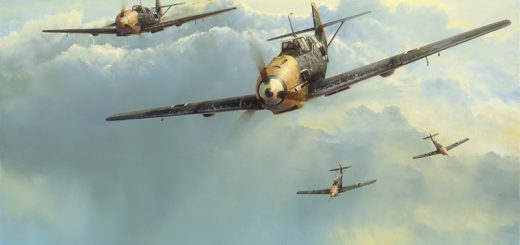
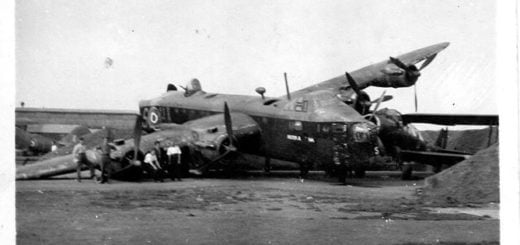





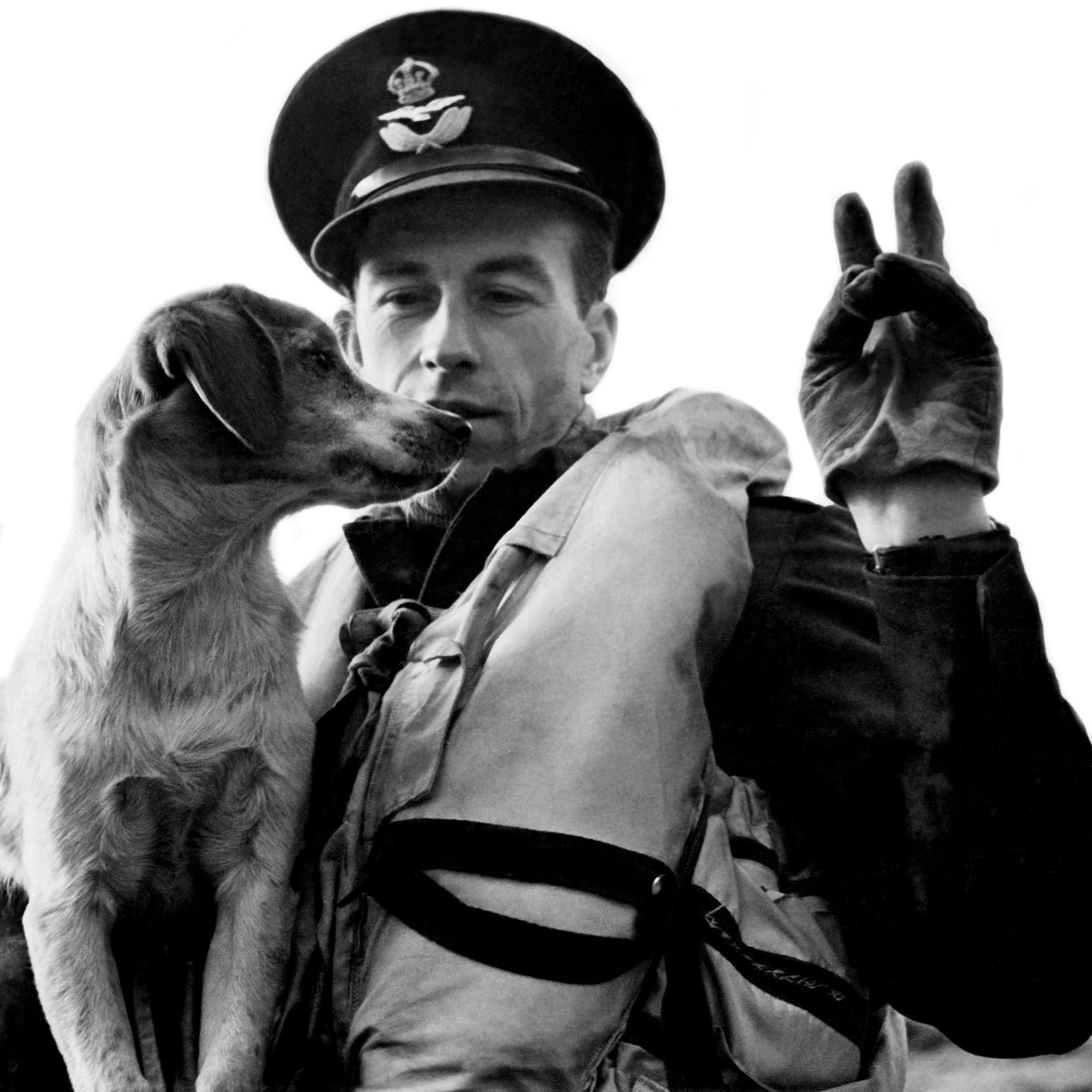
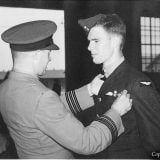


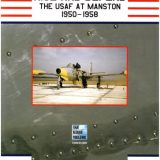
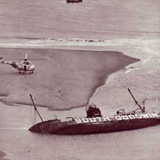
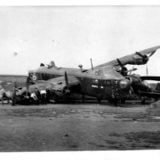

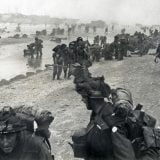
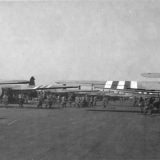
1 Response
[…] History of Manston Airfield: Dambuster Bouncing Bomb Tests […]